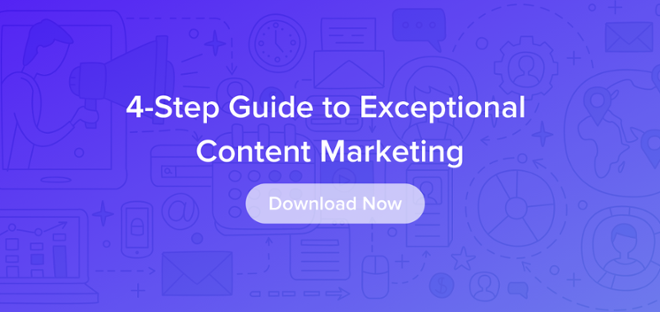 More than 2 million blog posts were born today. I’ll let that sink in for a minute.
More than 2 million blog posts were born today. I’ll let that sink in for a minute.
With that much content floating around the World Wide Web, getting the engagement or ROI you want from your piece may seem like an uphill battle — especially when you know it’s not literary gold. As much as most of us like to fancy ourselves the Hemingway of thought leadership, it’s downright difficult to craft a compelling article.
After reflecting on all the factors I consider while writing and editing, I came up with these four truths of good writing:
1. You need a good hook to catch the fish.
Few of us actually read every article we open in its entirety. Most readers only give the content on webpages a few seconds of their time before deciding whether to move on. While that puts the pressure on content creators, it’s not to say you can’t entice readers to stay past the first few sentences. The key is writing a hook so good that readers simply can’t abandon the piece.
The mark of a catchy hook is one that answers just the right number of questions while still leaving readers wanting more. Don’t give away all of your secrets in the first few paragraphs. Overexplaining not only makes your writing feel sluggish, but also deflates readers’ natural curiosity and desire to continue.
Luckily, there’s no one way to write a great hook — but make sure it’s tailored to your audience. A hook for an on-the-go pet owner should look a lot different than one meant for a seasoned business leader. Then, consider the tone, structure, and style of your article. A timely hook may work well for a newsy site like The Washington Post, but Brazen Careerist will want something with a little more bite.
Whether you choose to start with a hard-hitting fact or a poignant personal story, make sure it fits the audience, the narrative, and the publication.
2. Stop restating the obvious.
Stating well-known facts is not going to add anything new to the conversation — and it won't help you get your guest posts accepted by editors at the publications your audience is reading.
At this point, even novices know that gathering and analyzing customer data will help companies better target their audiences. Your readers don’t need you to remind them, and doing so will only weaken your credibility as a trusted source of relevant, compelling information and insight.
So how can you make sure you’re approaching an idea in a new way rather than imitating other experts? Inserting a timely example will add a fresh spin to your article and illustrate the point you’re trying to make. Taking a stance on a controversial topic will show that you’re rooted in your values and aren’t afraid of backlash. And highlighting groundbreaking research can instantly set the foundation for an authoritative, evidence-based piece of content.
3. Be more than a byline.
Storytelling is one of the newest buzzwords to tear through the marketing world, but that doesn’t mean a compelling story has lost its power. Think of a teacher who really had an impact on your learning experience. I bet she was an expert storyteller. Think of the boss who motivated you to reach for that promotion. I bet she was an expert storyteller. Think of the public speaker who inspired you to start volunteering. Again, I bet she was an expert storyteller.
In terms of thought leadership content, it’s in your best interest to let the audience know why you’re an expert. The best advice comes from those who have “been there, done that.” If you want to write on how to implement two-factor authentication on a companywide level, talk about how you did so in your own company. Just like that, you’ve become a reliable source.
Weaving personal stories throughout your narrative isn’t just a great way to showcase your expertise, though. It also humanizes you as the author. When you can show people that you’re not just a byline, they’ll be able to relate to your story and your business on a completely different level. Maybe talk about a rough time in your personal or professional life. How did it help you grow as a business leader? People ultimately want to relate to you — you just have to give them a reason to.
4. Clichés make for literary tripe.
There, I said it. We’re all guilty of this little infringement at some point, but clichés are a byproduct of lazy writing — they cheapen and dilute the meaning of your content. You could be talking about neuroscience, but the second I read “in this day and age,” I’m going to roll my eyes.
Rather than fall back on these expressions, make the effort to search for more meaningful descriptors. Above all else, word choice will help your content stand out above the rest. Why mingle with ambiguous phrasing when you can create crisp, bold copy that allows your overarching story to stand on its own? I challenge you to reach beyond the easy pool of watered-down phrasing to explore your own voice as a writer.
Creating exceptional thought leadership content is a full-time job — it just so happens to be mine! To build a compelling narrative that engages your audience, you can’t rush it. Keep these four tips in mind as you brainstorm, craft, and proofread your content, and you’ll stand a fighting chance of cutting through the noise.
We'd never let you fend for yourself. Download the free guide to ensure your team doesn't miss a key element in exceptional content creation:








